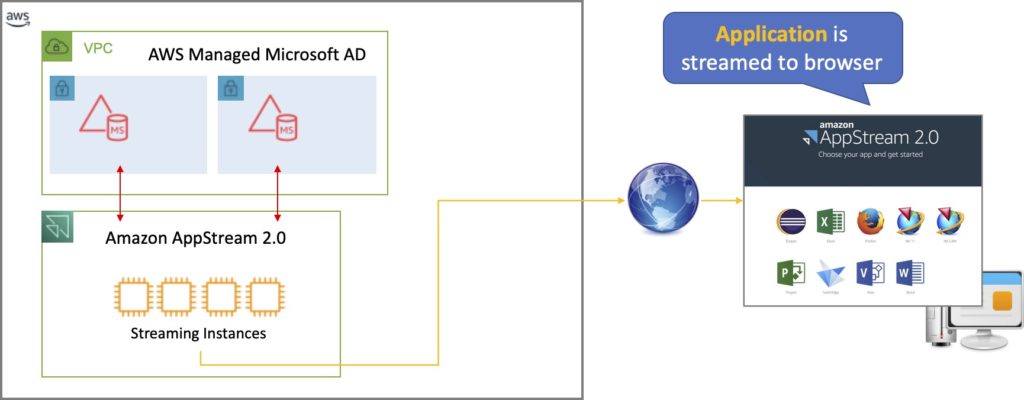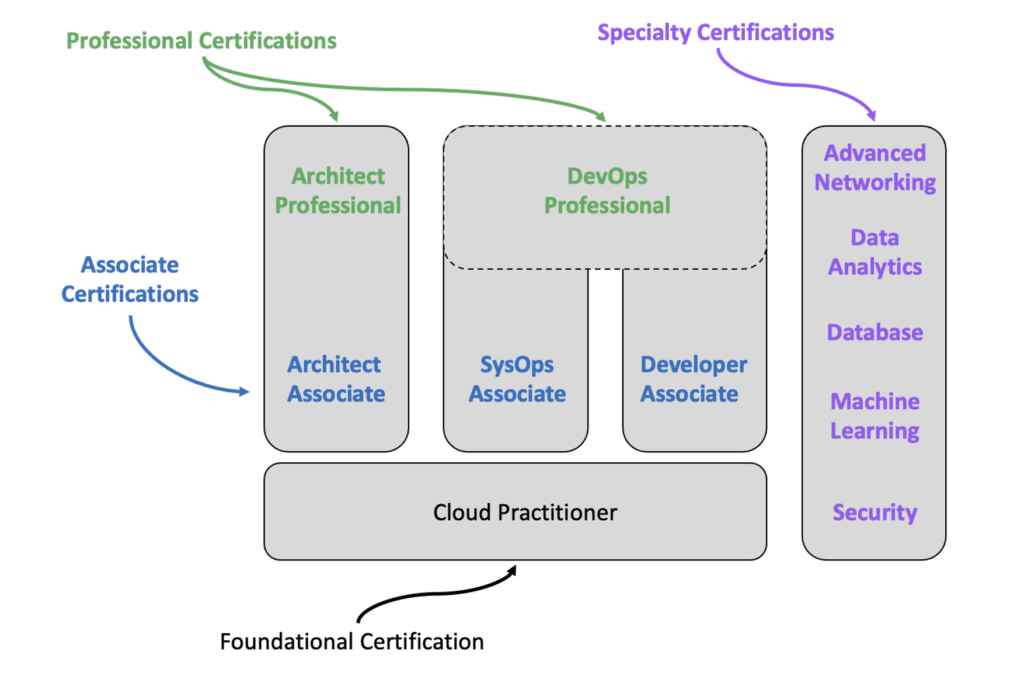Why Cloud Adoption Accelerated during the Pandemic
Please use the menu below to navigate the article sections:

I don’t have to remind you that we are in a time of accelerated change. In fact, levels of uncertainty are higher today than they have been for many years. One thing I’m pretty sure we can all agree on is that no one really knows for sure what’s going to happen over the next months and years.
What we’ve seen over the last year or so is a huge shift in how and where people work, how we socialize, how we collaborate, and how we consume. Businesses have responded to this change in many ways and though many businesses have suffered, others have survived and in some cases thrived.
What’s really interesting is how businesses have reacted to these unprecedented times, and how businesses have leveraged the cloud to ensure their survival and growth in a time of great uncertainty.
Uncertainty is a really important concept here – because I’m not just talking about the history of what has happened here. Many of the examples of how companies have responded to change over the last 12 months provide important lessons for how we all need to prepare for more change over the coming years.
Cloud Adoption and Why Skills are Essential for Success
One of the clearest trends during the pandemic has been the acceleration of cloud adoption and digital transformation initiatives. Many companies who have been considering cloud but haven’t committed to the transition, are now finding that they can’t put it off any longer.
Cloud skills is a really important subject – many businesses have been put in a position where they’ve needed to transition to the cloud. Whether that’s reducing their cost base to account for lower demand, or quickly bringing out new services to adapt to changing consumer habits or the competitive landscape…but they simply couldn’t because of a lack of skills necessary to manage and operate cloud infrastructure and applications.
In fact, Gartner has predicted that “insufficient cloud IaaS skills will delay half of enterprise IT organizations’ migration to the cloud by two or more years” – and that was pre-pandemic!
The pandemic made organizations focus on four key priorities:
- Optimize IT costs
- Support and secure a remote workforce
- Adapt to changing consumer behavior
- Business continuity
Depending on your industry vertical these priorities could be different but broadly speaking these are the top four across different industries.
So, let’s have a look at these priorities in a bit more detail.
1. Optimize IT Costs
Many organizations whether B2C or B2B have seen a significant drop in revenue caused by the lockdowns. The retail and airline industries are a couple of obvious examples. Other industries saw sudden bursts in demand or have experienced highly variable demand as government policies continue to change.
The ability to align costs with demand, and therefore revenue (in some cases), has been a key differentiator for businesses operating in the cloud.
Compute is an area where we see great benefits here, with the ability to automatically scale compute resources based on demand with services such as Amazon EC2 Auto Scaling and Amazon ECS. Or even just paying for each millisecond of compute time with serverless services such as AWS Lambda.
The diagram below shows how automatic scaling can help an organization to align the cost of computing with variable demand:

Databases are another great example. The Amazon Aurora relational database is now the fastest growing database in the history of AWS. The driver here is customers moving away from proprietary relational database technology with extremely high costs, inflexible licensing, and a profit-centric business model (you know who I’m talking about here).
AWS has some great tools for code and schema translation to support these migrations as well such as the AWS Schema Conversion Tool (SCT) and AWS Database Migration Service (DMS).
So, what are some of the key takeaways here?
- Evaluate your existing applications and determine whether they’re able to cope with major changes in demand – are they scalable and elastic?
- Make use of AWS Auto Scaling, Serverless Computing, and AWS Database services.
- Can you align costs with demand and what is the exposure if you can’t? Change is a constant – but accelerated and unpredictable change is the new reality.
- Can you take advantage of growth opportunities or are you constrained by hardware or software?
2. Support and Secure a Remote Workforce
Let’s now explore the changes to working patterns.
Working remotely introduces a few challenges. Employees need to be able to communicate and collaborate. Video conferencing and document sharing and collaboration tools are really important here.
I’m sure we’ve all become familiar with Zoom, despite them being a relatively small player pre-pandemic. In fact, to “Zoom” seems to have become a new verb. Over the last year, Zoom experienced a spike from 10 million daily users to over 300 million regular daily meeting participants. The AWS cloud played a key role in enabling this scalability and Zoom has chosen AWS as their preferred cloud provider.
Another challenge is the remote management and administration of infrastructure and applications. Traditional infrastructure and applications often require a VPN connection for remote administration and sometimes a jump host (or bastion host), or other dependant infrastructure.
This can cause challenges if it is unreliable, difficult to use, or doesn’t scale easily, which is often the case.
Cloud services on the other hand, are designed to be managed remotely using browser-based interfaces and REST APIs. If your applications are running in the cloud, changes to the location of your staff shouldn’t cause any administrative headaches.
Some of the services AWS offer that can assist in this area are:
- Amazon Workspaces for desktop-as-a-service.
- Amazon WorkLinks for accessing internal websites and webapps.
- Amazon WorkDocs for online document sharing, and AppStream for application streaming.
- Amazon AppStream 2.0 for streaming applications (shown below and similar to Citrix XenApp).

Coming back to the Zoom example, Zoom actually leveraged Amazon Workspaces to massively increase their call center operations in a very short timeframe. If you’re familiar with Virtual Desktop Infrastructure (VDI), Amazon Workspaces is essentially a fully-managed VDI in the cloud.
Each of these AWS services can also be integrated into existing identity providers such as Active Directory (using AWS Directory Services), so you can easily deploy these solutions using your existing directory services, and deploy them securely to your existing users.
3. Adapt to Changing Consumer Behavior
This is a really interesting topic as every industry, and every company in fact, has experienced different challenges. Agility and speed are the key characteristics needed here. When consumer habits change, or the competitive landscape changes, quickly adapting to new requirements is the key to survival.
Banking and healthcare are both good examples of industries that traditionally relied on physical contact with customers for many transactions. When the lockdowns came into effect these businesses had to quickly evolve their online services. The ability to develop secure, online applications to support customer’s needs can be greatly simplified with cloud services.
Analytics and machine learning are also being used to accelerate research and enable data-driven decision-making for delivery of healthcare services to citizens and patients. These services can be used to proactively anticipate changes in behaviour and the demands of customers. Get ahead of the curve!
If you do have any experience with Machine Learning and Analytics projects, you likely understand how complex and expensive it can be to implement. Managed services are the differentiator here – with the cloud it’s not just about cost and flexibility, it’s about significantly reducing complexity by leveraging managed platform services. A good example is Amazon Sagemaker which helps data scientists and developers to prepare, build, train, and deploy high-quality machine learning (ML) models.
Scalability and elasticity are also essential. The online learning platform Udemy is actually a really good example here. Their platform experienced huge growth in enrolments during the early stages of the lockdowns and was able to absorb that demand due to leveraging underlying cloud services.
Cloud storage is another technology that’s becoming increasingly important. As organizations transition workloads to the cloud to enable business continuity, being able to scale their storage footprint without massive upfront capital expenditures is a game-changer.
So, what can you do?
- Utilize serverless services such as AWS Lambda and event-driven architectures in the cloud.
- Leverage managed services where possible.
- Ensure your applications are scalable and elastic.
- Evaluate cloud storage, analytics and machine learning for insights.
4. Business Continuity
This relates to the continued operations of your business during any kind of disruption, whether it be physical outages, localized events, or even staffing issues. The cloud offers several key benefits here:
- It is distributed in nature with deployment options in different regions.
- It is highly redundant with fault tolerance and high availability built-in.
- It’s designed for internet-based access and remote management.
There are many ways to leverage cloud services for business continuity. These range from replicating storage into the cloud for disaster recovery, to replicating a full application stack or entire environment.
Many organizations have been using the cloud primarily for business continuity for their on-premises data center environments for many years. To take it a bit further, when operating principally in the cloud more advantages can be gained using built-in replication features of services.
It’s actually amazing how easy it is to deploy regionally redundant services in the cloud. I remember building DR copies of clustered database solutions many years ago where you needed months of planning and implementation. Today, it’s a simple check-box in the AWS Management Console or a single API call to create a HA copy of relational database (e.g. Amazon RDS) in another availability zone.
Another challenge with traditional business continuity plans (BCP) is execution. Often BCPs do not get tested often and fail when they are tested. In the cloud, it’s simple, quick, and cost-effective to test your procedures and make sure you’re ready for any unexpected events.
The key recommendations here are to evaluate your current business continuity plans and evaluate the cloud services that can help you. If you’re responsible for your company’s BCP you’ll sleep way better at night if you can regularly and effortlessly test it out.
Upskill your Workforce
As I mentioned earlier, cloud skills are one of the biggest roadblocks to cloud adoption, especially the accelerated adoption many companies are now being forced into.
Yes, you can leverage outside companies to help you with cloud architecture and deployment. You can use systems integration companies, hire consultants, and utilize AWS Solutions Architects.
However, your staff understand your company and your systems and processes and they are going to need to manage and operate the infrastructure and applications in the cloud. Therefore, it’s essential to start upskilling your workforce if cloud adoption is on your radar.
So, what are the key skills and learning paths? AWS offer role-based certification learning paths. These are designed to develop the skills necessary for specific company job roles.
Tip: You can learn more about the AWS Certification paths in our free Beginners Guide to AWS Certification eBook.

First, there’s the foundational level with the AWS Certified Cloud Practitioner. This is useful for technical and non-technical staff as it covers the value proposition of the cloud, the key services, and billing and pricing.
Next, there’s the associate level. Here there are three certifications designed for different job roles. The AWS Certified Solutions Architect Associate is by far the most popular and probably a good one for all technical staff. However, the AWS Certified SysOps Administrator Associate and AWS Certified Developer Associate are well worth considering for those working in operations and development roles.
At the top, there’s the professional level with the AWS Certified Solutions Architect Professional and DevOps Professional certifications. The bar is set much higher at the pro level and these certifications require a solid amount of practical experience. That being said, they are also highly sought after as they demonstrate a deep level of proficiency with the AWS Cloud.
Next up there are the specialty certifications. These are much more focused on deep expertise for specific job roles such as cloud network engineers, database administrators and analytics and machine learning roles. Some organizations require all staff working on AWS to have the security specialty to ensure they know how to build secure applications.
It’s definitely recommended to only take on the specialty certifications after having completed at least one core certification at the associate level. I get quite a few students asking me if they can go straight to a specialty certification and the answer is no as you need to learn some core AWS skills and understand a broad range of services before you go there.
Hands-on experience is super important. If you don’t have access to a sandbox environment you can easily create your own accounts and use the AWS free tier to learn.
All AWS training courses from Digital Cloud Training have a significant component of guided hands-on activities. For anything above the cloud practitioner level, hands-on experience is a must to pass the exam and obviously essential to being able to actually work in the cloud.
Recommendations:
- The AWS Certified Cloud practitioner is useful for anyone who is exposed to cloud.
- Align staff to the role-based learning paths.
- Only take specialties after at least one associate level certification.
- Make sure there’s a strong hands-on component in your AWS training courses (free tier is useful here).
Your Cloud Adoption Journey
Cloud adoption has accelerated during the pandemic as businesses have realized the significant benefits they can gain from moving away from a traditional IT operating model. As we go forward through 2021, we’re going to see even greater cloud adoption as businesses start to recover and need to ensure they cover their downside in these uncertain times. We will also see those businesses that have started the transition to cloud gaining competitive advantages over the competition that hasn’t.
Whether your cloud adoption journey includes AWS, Microsoft Azure, Google Cloud Platform, or any other provider, having the skills to successfully transition and then manage and operate in the cloud is essential. Get started now with upskilling yourself and your workers to ensure you’re ready for the demands the business will place on you as we move into a new era of cloud computing.
Get AWS Certified
Check out our popular AWS training that will fully prepare you for your next AWS certification exam:
AWS Training – Our popular AWS training will maximize your chances of passing your AWS certification the first time.
Membership – For unlimited access to our cloud training catalog, enroll in our monthly or annual membership program.
Challenge Labs – Build hands-on cloud skills in a secure sandbox environment. Learn, build, test and fail forward without risking unexpected cloud bills.




